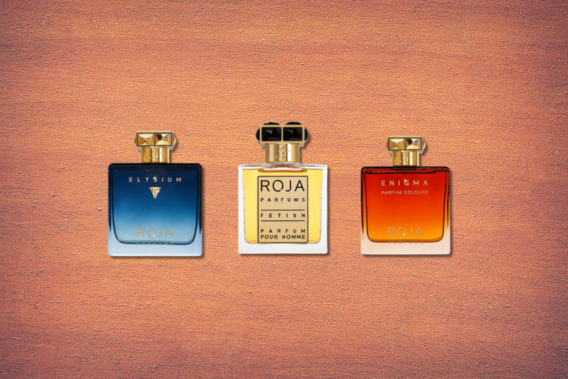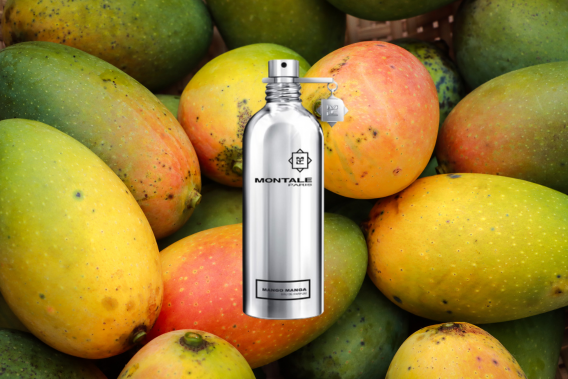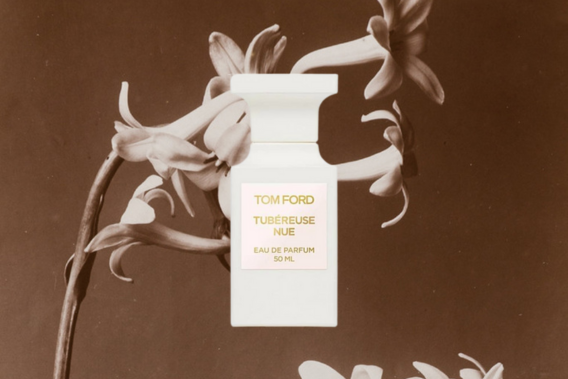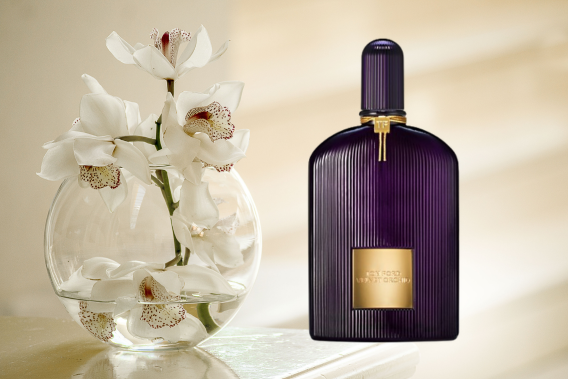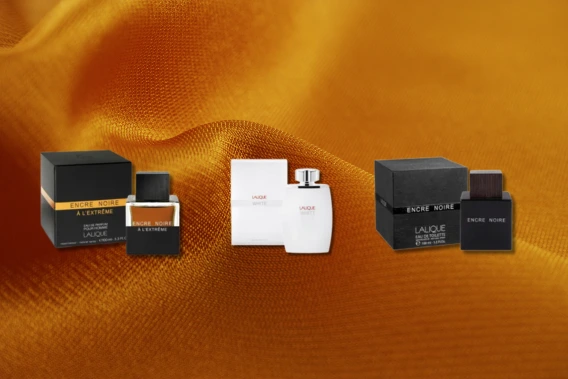The Ultimate Guide to Fragrance Types
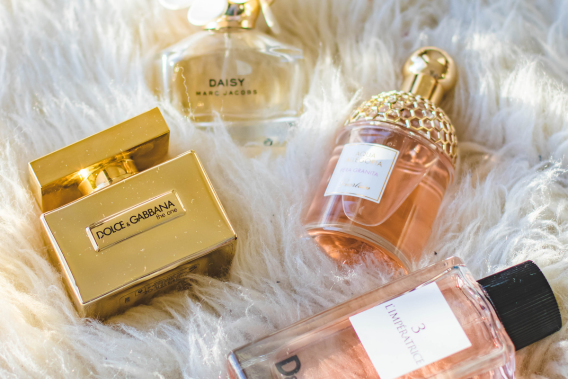
Fragrances are an important part of our daily lives. They have the power to lift our mood, evoke memories, and make us feel confident. However, with so many fragrance types available in the market, it can be challenging to navigate through the choices and find the right scent that suits your personality, style, and occasion. This article will guide you through the different fragrance types, their history, olfactory science, concentration levels, application techniques, fragrance selection, and care and storage tips.
Fragrances have been used since ancient times for their therapeutic and cosmetic benefits. The Egyptians were the first to use perfumes for religious ceremonies and burial rituals. The Greeks and Romans also used fragrances for their baths, massages, and cosmetics. Today, fragrances are widely used in perfumes, colognes, body sprays, and scented candles. The fragrance industry is worth billions of dollars and continues to evolve with new scent creations and technology.
Understanding the science of fragrance is essential to appreciate the complexity and artistry of perfumery. Fragrances are composed of various aromatic compounds that produce different scent notes.
The top notes are the initial scents that you smell when you apply the fragrance. The heart notes are the main body of the fragrance that lasts for several hours. The base notes are the final scents that linger on your skin for a longer time. By understanding the fragrance notes, you can choose a scent that matches your mood, season, and occasion.
Key Takeaways
- Fragrances have been used since ancient times for their therapeutic and cosmetic benefits.
- Fragrances are composed of various aromatic compounds that produce different scent notes.
- Understanding the fragrance notes is essential to choose a scent that matches your mood, season, and occasion.
History of Fragrance
Fragrances have been used for thousands of years, dating back to ancient civilizations such as the Egyptians, Greeks, and Romans. The art of perfumery was apparently known to the ancient Chinese, Hindus, Israelites, Carthaginians, and Arabs as well. The oldest perfumes were discovered by archaeologists in Cyprus, and they were more than 4,000 years old.
Ancient Origins
The ancient Egyptians were the first to incorporate perfume into their culture. They used fragrances for religious ceremonies, as well as for personal grooming and cosmetics. The Egyptians also used perfume in the embalming process to mask the odor of decay. They created fragrances using a variety of natural ingredients such as myrrh, frankincense, and cinnamon. The Greeks and Romans also used fragrances for religious and cosmetic purposes, and they developed new techniques for extracting essential oils from plants.
Modern Developments
In the 14th century, the first alcohol-based perfume was created in Hungary. This new method of fragrance production made it possible to create more complex scents and allowed for longer-lasting fragrances. The perfume industry continued to evolve, and by the 19th century, France had become the center of the perfume industry. The French developed new techniques for creating perfumes, and many of the most iconic fragrances were created during this time, including Chanel No. 5 and Guerlain’s Shalimar.
Today, there are countless fragrance types available, ranging from traditional floral scents to more modern and experimental fragrances. The fragrance industry continues to innovate, with new techniques for extracting essential oils and creating unique scent combinations. Whether used for personal grooming, aromatherapy, or simply to create a pleasant atmosphere, fragrances have a long and fascinating history that continues to evolve.
Olfactory Science
Fragrances are an essential part of our daily lives, and they can make us feel confident, relaxed, or even romantic. However, the science behind fragrances is often overlooked. Understanding the olfactory science behind fragrances can help you choose the right fragrance for your personality and lifestyle. This section will explore the two essential aspects of olfactory science: perfume notes and scent lifespan.
Perfume Notes
Perfume notes refer to the different layers of a fragrance. Fragrances are made up of three notes: top notes, middle notes, and base notes.
Top notes are the first scent you smell when you apply a fragrance. They are usually light and fresh and evaporate quickly.
Middle notes are the heart of a fragrance, and they emerge after the top notes have evaporated. They are usually floral or fruity scents.
Base notes are the final layer of a fragrance and are usually woody or musky. They are the scents that linger on your skin after the fragrance has evaporated.
Scent Lifespan
The lifespan of a fragrance refers to how long it lasts on your skin. The lifespan of a fragrance can vary depending on the concentration of the fragrance, the quality of the ingredients, and the type of fragrance.
Fragrances are classified into four categories: Eau de Cologne, Eau de Toilette, Eau de Parfum, and Parfum. Eau de Cologne has the lowest concentration of fragrance, while Parfum has the highest concentration of fragrance. Eau de Cologne usually lasts for about two hours, while Parfum can last for up to 12 hours.
In conclusion, understanding the olfactory science behind fragrances can help you choose the right fragrance for your personality and lifestyle. By knowing the different perfume notes and the scent lifespan, you can make an informed decision when purchasing a fragrance.
Fragrance Families
Fragrance families are a classification system used by the perfume industry to group different scents into olfactive groups. There are four main fragrance families: floral, oriental, woody, and fresh. Each family has its own unique characteristics that make it distinct from the others.
Floral
Floral fragrances are the most popular and widely used in the perfume industry. As the name suggests, they are made up of floral scents such as rose, jasmine, and lavender. These fragrances are often associated with femininity and are commonly used in women’s perfumes. They are light, fresh, and delicate, making them perfect for everyday wear.
Oriental
Oriental fragrances are warm and spicy, with a hint of exoticism. They are made up of scents such as vanilla, amber, and musk. These fragrances are often associated with sensuality and are commonly used in men’s colognes. They are rich, complex, and long-lasting, making them perfect for special occasions.
Woody
Woody fragrances are earthy and masculine, with a hint of musk. They are made up of scents such as sandalwood, cedar, and patchouli. These fragrances are often associated with strength and stability and are commonly used in men’s colognes. They are warm, comforting, and long-lasting, making them perfect for the colder months.
Fresh
Fresh fragrances are light and airy, with a hint of citrus. They are made up of scents such as lemon, lime, and grapefruit. These fragrances are often associated with cleanliness and are commonly used in women’s perfumes. They are crisp, refreshing, and perfect for everyday wear.
In summary, fragrance families are a useful way to classify different scents into olfactive groups. Each family has its own unique characteristics that make it distinct from the others. Whether you prefer floral, oriental, woody, or fresh fragrances, there is a scent out there for everyone.
Concentration Levels
Fragrances come in different concentration levels, which determine the strength, longevity, and projection of the scent. The concentration level refers to the amount of perfume oil in the fragrance, which is mixed with alcohol and water. Higher concentration levels have more perfume oil and less alcohol, making them stronger and longer-lasting.
Eau de Parfum
Eau de Parfum (EDP) is a popular fragrance concentration level that contains 15-20% perfume oil. It is stronger and longer-lasting than Eau de Toilette and Eau de Cologne, making it ideal for evening wear or special occasions. EDP fragrances are available in a wide range of scents, from floral to woody to oriental.
Eau de Toilette
Eau de Toilette (EDT) is a lighter fragrance concentration level that contains 5-15% perfume oil. It is less strong and less long-lasting than EDP, making it ideal for day wear or casual occasions. EDT fragrances are available in a wide range of scents, from citrus to floral to aquatic.
Eau de Cologne
Eau de Cologne (EDC) is a lighter fragrance concentration level that contains 2-4% perfume oil. It is the lightest and least long-lasting of the three main fragrance concentration levels, making it ideal for hot weather or casual occasions. EDC fragrances are available in a wide range of scents, from fresh to fruity to herbal.
Perfume Oils
Perfume oils are the purest form of fragrance and have the highest concentration level, with up to 40% perfume oil. They are more expensive than other fragrance types but are also the longest-lasting and most potent. Perfume oils are available in a wide range of scents, from floral to spicy to oud.
In summary, the concentration level of a fragrance determines its strength, longevity, and projection. Eau de Parfum, Eau de Toilette, and Eau de Cologne are the three main fragrance concentration levels, with varying amounts of perfume oil. Perfume oils have the highest concentration level and are the longest-lasting and most potent of all fragrance types.
Application Techniques
When it comes to applying fragrance, there are a few techniques that can help you get the most out of your scent. The two most common techniques are applying to pulse points and layering scents.
Pulse Points
Pulse points are areas of the body where blood vessels are closest to the skin’s surface. These areas generate heat, which can help to activate the fragrance. The most common pulse points are the wrists, neck, behind the ears, and the inside of the elbows.
To apply fragrance to pulse points, spray or dab a small amount of fragrance onto the area and allow it to dry. Avoid rubbing the area as this can break down the fragrance molecules and affect the scent.
Layering Scents
Layering scents involves applying multiple fragrances to create a unique scent profile. This technique can be done by combining fragrances from the same brand or by mixing and matching fragrances from different brands.
When layering scents, start with a fragrance-free body lotion to create a base layer. Apply the lotion to the skin and allow it to dry before applying the fragrances. Begin with the lightest fragrance and work up to the heaviest fragrance. This will help to prevent overpowering scents and ensure that each fragrance can be detected.
Overall, these application techniques can help to enhance the longevity and intensity of fragrances. By using these techniques, individuals can create a unique scent profile that is tailored to their personal preferences.
Fragrance Selection
When it comes to fragrance selection, personal preferences and seasonal choices play a crucial role. Understanding the different types of fragrances and their notes can help individuals make informed decisions about which scent to choose.
Personal Preferences
Personal preferences are unique to each individual and can vary based on factors such as lifestyle, personality, and personal experiences. Some individuals prefer floral scents, while others prefer musky or woody scents. It is important to choose a fragrance that resonates with one’s personality and lifestyle.
To determine personal preferences, individuals can start by sampling different fragrances and taking note of the scents that they enjoy. Fragrance preference can also be influenced by cultural and regional factors.
Seasonal Choices
Seasonal changes can also influence fragrance selection. During the warmer months, lighter and fresher scents are preferred, while heavier and warmer scents are preferred during the colder months.
For the spring and summer months, individuals may opt for fragrances with floral or citrus notes. In contrast, for the fall and winter months, individuals may opt for fragrances with woody or spicy notes.
In addition to seasonal changes, the time of day can also influence fragrance selection. Lighter scents are preferred during the day, while heavier scents are preferred for evening wear.
Ultimately, fragrance selection is a personal choice that should reflect one’s personality, lifestyle, and preferences. By understanding the different types of fragrances and their notes, individuals can make informed decisions about which scent to choose.
Fragrance Care and Storage
Proper care and storage can help maintain the quality and longevity of fragrances. Here are some tips on how to care and store different types of fragrances:
Eau de Parfum and Perfumes
Perfumes and Eau de Parfums are highly concentrated fragrances that contain a higher percentage of aromatic oils. To store these fragrances, it is recommended to keep them in their original packaging, which is usually an airtight container with tight seals and spray heads that excel at keeping oxygen out. This helps prevent evaporation and oxidation, which can degrade the fragrance compounds.
It is also important to store perfume bottles in a dry place. Humidity affects a fragrance’s makeup and triggers unwanted chemical reactions. If possible, store them in a room with a dehumidifier, which will help keep the air dry.
Eau de Toilette
Eau de Toilette is a lighter, less concentrated fragrance that contains a lower percentage of aromatic oils. To store these fragrances, it is recommended to keep them in a cool and dry place, away from direct sunlight. Store them in their original packaging or in small, airtight containers to prevent air exposure.
Cologne
Cologne is a lighter fragrance that contains a lower concentration of aromatic oils than Eau de Toilette. To store cologne, it is recommended to keep it in a cool and dry place, away from direct sunlight. Store them in their original packaging or in small, airtight containers to prevent air exposure.
Solid Perfume
Solid perfumes are a wax-based fragrance that come in a compact container. To store solid perfumes, it is recommended to keep them in a cool and dry place, away from direct sunlight. Store them in their original packaging or in small, airtight containers to prevent air exposure.
By following these simple tips, one can ensure that their fragrances remain fresh and of high quality for a long time.
FAQs
What are the 9 types of scents?
There are many different ways to categorize scents, but one common way is to divide them into nine categories: floral, fruity, woody, oriental, aquatic, citrus, spicy, and gourmand.
- Floral scents are characterized by their delicate, flowery aromas. They are often associated with spring and summer, and are perfect for women who want to smell fresh and feminine. Some popular floral fragrances include Chanel No. 5, Daisy by Marc Jacobs, and J’adore by Dior.
- Fruity scents are bright and refreshing, and are perfect for summer days. They are often made with notes of citrus, berries, or tropical fruits. Some popular fruity fragrances include Viva La Juicy by Juicy Couture, Stella by Stella McCartney, and Marc Jacobs Daisy Love.
- Woody scents are warm and sensual, and are perfect for fall and winter. They are often made with notes of cedarwood, sandalwood, or patchouli. Some popular woody fragrances include Tom Ford Tobacco Vanille, YSL La Nuit de L’Homme, and Dior Sauvage.
- Oriental scents are mysterious and alluring, and are perfect for nights out on the town. They are often made with notes of amber, musk, or incense. Some popular oriental fragrances include Black Opium by Yves Saint Laurent, Shalimar by Guerlain, and Tom Ford Oud Wood.
- Aquatic scents are fresh and clean, and are perfect for hot summer days. They are often made with notes of sea water, citrus, or mint. Some popular aquatic fragrances include Cool Water by Davidoff, Acqua di Gio by Giorgio Armani, and Eau de Rochas by Rochas.
How do you categorize scents?
There are many different ways to categorize scents, but one common way is to divide them into three categories: top notes, middle notes, and base notes.
What is a fragrance category?
A fragrance category is a group of fragrances that share similar characteristics. For example, floral fragrances are characterized by their delicate, flowery aromas, while fruity fragrances are bright and refreshing.
There are many different fragrance categories, and each one has its own unique appeal. By understanding the different fragrance categories, you can find the perfect fragrance for your personality and lifestyle.
What fragrance type is most popular?
There is no one-size-fits-all answer to this question, as the most popular fragrance type will vary depending on the individual. However, some of the most popular fragrance types include floral, fruity, and woody.
Floral fragrances are typically associated with femininity, while fruity fragrances are more youthful and playful. Woody fragrances are often considered to be more masculine, but they can also be unisex.
What are the main categories used to classify perfumes?
Perfumes can be classified into five main categories: floral, oriental, woody, fresh, and fougère. Each category has its unique scent profile and is further divided into subcategories.
How can one determine the best perfume choice for men?
Choosing the best perfume for men depends on their individual preferences and personality. It’s essential to consider the occasion, season, and time of day when selecting a fragrance. Men’s perfumes are usually classified into four categories: fresh, woody, oriental, and fougère.
Could you explain the different notes that make up a perfume’s scent?
A perfume’s scent is made up of three notes: top, middle, and base notes. Top notes are the initial impression of the fragrance and fade away after a few minutes. Middle notes or heart notes are the core of the fragrance and last for several hours. Base notes are the foundation of the fragrance and can last for up to 24 hours.
What is the fragrance wheel, and how does it relate to selecting perfumes?
The fragrance wheel is a tool used to classify perfumes based on their scent profile. It consists of four main categories: floral, oriental, woody, and fresh. Each category is further divided into subcategories. The fragrance wheel can help individuals choose perfumes that fit their personality and preferences.
How do oriental scents differ from other fragrance families?
Oriental fragrances are known for their warm, spicy, and exotic scents. They are usually made up of ingredients like vanilla, amber, and musk. Oriental fragrances are more potent and long-lasting than other fragrance families.
What are the different levels of fragrance concentration in perfumes?
Perfumes are available in four different levels of fragrance concentration: parfum, eau de parfum, eau de toilette, and eau de cologne. Parfum has the highest concentration of fragrance oils and can last up to 24 hours. Eau de parfum has a lower concentration of fragrance oils and lasts for up to 8 hours. Eau de toilette and eau de cologne have the lowest concentration of fragrance oils and last for up to 4 hours.
Ultimately, the best way to find the most popular fragrance type is to experiment and find what you like. There are hundreds of different fragrances on the market, so there is sure to be one that is perfect for you.

